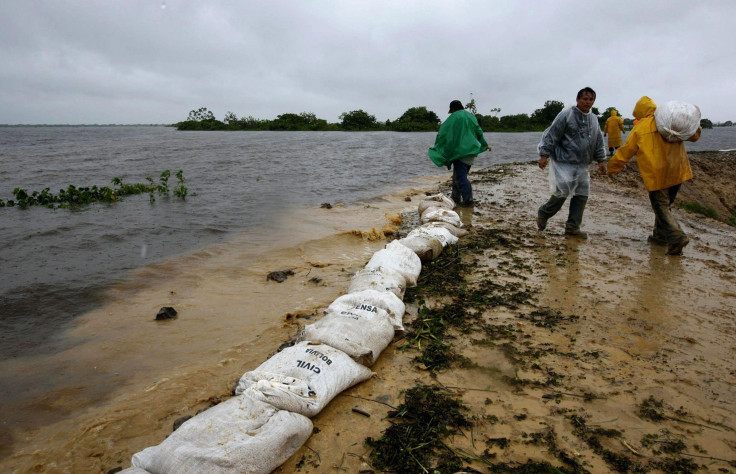Scientists: Severe Pacific sea level events to double because of climate change

Tropical Pacific island-nations will see more frequent extreme inter-annual sea level swings brought by strong El Niño and La Niña events, suggest scientists at the International Pacific Research Center, University of Hawaii at Mānoa and CSIRO in Australia. Using state-of-the-art climate models, together with simulations of the observed climate and tide-gauge records, the team found that projected climate change will result in extreme sea levels, especially in the tropical southwestern Pacific by the end of this century.
According to Matthew Widlansky, one of the scientists who worked on the experiment, their previous work determined that toward the end of a very strong El Niño event, the tide-gauge measurements around Guam quickly returned to normal, reflecting the east-west seesaw, but those near Samoa continued to drop as a result of the lagging north-south seesaw. As a result of sea level drops, shallow marine ecosystems in South Pacific Islands were exposed, causing massive coral die-offs with a foul-smelling tide referred to as taimasa.
“During these strong events, the summer rainband over Samoa, called the South Pacific Convergence Zone, shifts toward the equator and alters the trade winds and ocean currents which in turn change the sea level,” Widlansky explained.
His colleague, Axel Timmermann, said that the team’s next step would be to understand how future changes in winds, projected by most climate models, will impact the inter-annual swings in sea level. Timmermann claims that more frequent and prolonged drops in sea level are noted as well as more frequent high sea level occurrences. This will reportedly further increase the risk of coastal inundations.
Their findings, according to the scientists, are consistent with previous studies, which show that the atmospheric effects of both El Niño and La Niña are likely to become stronger and more common in a future warmer climate. They also caution that the possibility of more frequent flooding in some areas and sea level drops would have severe consequences to the vulnerable coastlines of Pacific islands.
The authors hope that their study, which examines better predictability of not only rising sea levels but also the sea level fluctuations, will aid Pacific Island communities in adapting to the impacts of climate change as well as shorter-term climate events, such as the ongoing 2015 El Niño.
In a previous multi-agency research published in the journal Nature Geoscience, scientists found that the biggest factors affecting communities and beaches surrounding the Pacific Ocean were the El Niño and La Niña events. Through coastal hazards analysis of data from 1979 to 2012, the team observed that there are alternate impacts of climate change in different parts of the Pacific basin, which is similar to the findings of Widlansky and his team.
When one side of the Pacific experienced extreme coastal erosion and flooding because of El Niño, it was noted that the other side often experienced these hazards during La Niña. Climate projections suggest that these events may occur more frequently in the 21st century, which translate to more severe flooding or erosion in populated regions.
Contact the writer at feedback@ibtimes.com.au or tell us what you think below.




















